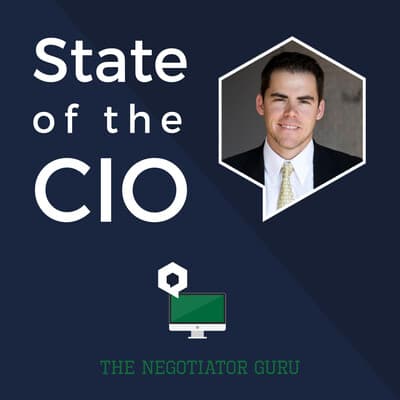Business
Dan Willey is the CIO of Wilbur-Ellis. Doug Farrington is the Digital Officer for BASF, North America. Ernie Chappell is the founder and president of EFC Systems. We talk about what is working and what isn’t when it comes to IT and agriculture. We focus most of our conversation on artificial intelligence. Show Notes:[01:26] Dan shares how he got into IT and agriculture. He grew up in a rural area so agriculture was very appealing to him. He loves the connectivity with those that help us eat.[02:39] Doug shares how he got into agriculture and IT. His interest in IT started when his dad brought a computer home. He grew up farming so agriculture seemed like a good fit.[04:45] Ernie shares how he got started in IT and agriculture. This space is perfect for him because in his teenage years he loved visiting his relative’s farm. So it is the perfect intersection for his love of agriculture, finance, and technology.[07:48] There are still a lot of opportunities where we are at. There are opportunities to become more efficient, business operations improvement, and top-line growth.[07:19] With digital agronomy we have a lot of room to grow in farming.[09:25] When AI gets to the point where the decisions made by AI are as good or better than what a human can make that’s when we will see the adoption. Right now we are creating information and insights, but the farmer and agronomist are still making the decision.[10:18] The agriculture industry is a bit of a laggard compared to health care, financial systems, and banking when it comes to embracing technology. It is a bit tough for agriculture because every piece of land is different. The variety that we are dealing with crops and geography are uncontrollable variables and it may be a tough area.[11:34] Technology has brought a lot of benefits in the last three and five years and that pace seems to be accelerating.[13:15] One of the advantages that agriculture has is that we have a backlog of information and we haven’t started floating those ideas out to get traction.[15:07] The farmers are asking for help simplifying their lives and business.[15:43] All growers see that there is value in digital. Most growers don’t see how to get the value out of the tool or data.[17:35] Robotics is the future, especially with labor shortages.[18:04] The business of farming and growing food for the world isn’t really an isolated activity. The retailers and service providers meeting that grower where they are at is important.[21:18] Margin follows value. Are you solving the problems that need to be solved?[22:23] We are held accountable to solve problems that make a difference for the farmer. It is urgent that we bring an advancement of technology to bear for feeding the world, helping the environment, and profitability for the farm.[22:53] You have to be driving for change and embracing it.[23:51] It is important to set aside time for innovation.[27:14] Innovation today is about building a start-up model where you try things, learn quickly, and then pivot.[28:03] You can’t innovate in a vacuum. You have to innovate with your customers.[29:34] We need to be building things that are easy to use. We need increased simplicity to get adoption.[32:14] If you look at the palette of options and applications that are out there from an agriculture perspective, there are over 100 applications and counting that are out there to help the grower or retailer.[32:38] There are plenty of opportunities to become more efficient to replace your outdated processes and solutions.[34:09] If you can drive out costs from efficiency gains then you can invest more in top-line growth.[35:52] It is not only what you can build, but can you articulate the value to the organization.[37:40] Spend time with your growers so you can really learn the business from the ground up.[38:07] Know your customer and business especially with data. Your ability to interpret data depends on your knowing the space.[39:04] There are no failures and failure isn’t fatal. It is just a journey until you get it right. The number one thing that you need is grit and persistence to keep trying and failing.Links and Resources:State of the CIO Podcast WebsiteState of the CIO Podcast on Apple PodcastsDan on LinkedInDan on LinkedInDoug on LinkedInErnie on LinkedIn

